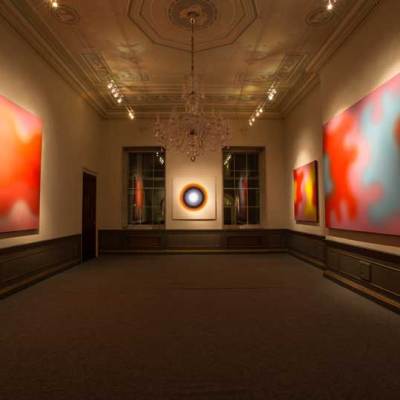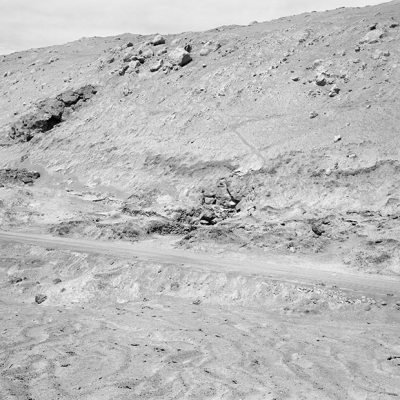The Metropolitan Museum of Art has a small but perfect show, ‘The Winchester Bible: A masterpiece of Medieval Art’. Easy to find, it is on the ground floor right by the city’s most beautiful Christmas tree.
The Bible was commissioned around 1150 by the richest man in England, Henry of Blois, for Winchester Cathedral where he was bishop. It would be the largest illustrated bible ever made, almost two feet tall, and was to be read aloud during meals in the monks’ refectory. On Henry’s death in 1171, work stopped. The handsome Latin text, mostly written by one scribe, was complete (with various corrections in the margins). The illustrations, by six artists, were not – and of those that were, some were subsequently removed and one magnificent page now belongs to the Morgan Library in New York. Today, 843 years later, most of the Winchester Bible is still in its cathedral, and although not read out in the refectory it is still used for important royal and church occasions. It is one of the world’s finest medieval manuscripts.
Opening for the Book of Jeremiah (detail; 1150–80), Winchester Bible, fol. 148r. Lent by the Chapter of Winchester Cathedral Image: © The Chapter of Winchester Cathedral

Henry of Blois was the perfect patron: hugely ambitious, sharply competitive, a considerable intellect, and lavish with funds. He wanted his Winchester bible to be the biggest and best – its size was only limited by the size of a calf’s skin for making the vellum. Henry had good pedigree. Born in 1098, he was one of five sons of the Count of Blois and William the Conqueror’s daughter, Adela of Normandy. When his father died on crusade in 1102, he left an estate that included Chartres and at least 350 castles. Having been educated at Cluny, young Henry of Blois was entrusted to his uncle, Henry I of England, who made him Abbot of Glastonbury in 1126 and Bishop of Winchester in 1129. Six years later his brother, Stephen, succeeded Henry I as king. Henry of Blois was Stephen’s advisor, a passionate builder and engineer (he added a tunnel under Winchester Cathedral so tourist pilgrims could view the relics better). He collected antiques: when in Rome to visit the Pope, he bought ancient Roman sculptures. And he commissioned books including the Blois Psalter now in the British Library.
His bible is magnificent. It has 936 pages and 51 fully illustrated initials plus drawings and the Morgan Leaf. Until recently, it was on show in a musty, ill-lit upstairs room of the cathedral. Now, its much-needed stabilisation and conservation is under way in Christopher Clarkson’s Oxford laboratory – and not a moment too soon. The combination of fashionable London bookbinder Charles Lewis’s rebinding in 1820 using hot rabbit skin glue (which eats into vellum), Beatrice Forder’s misguided efforts to undo the damage, and 843 years of oily human hands, mean that first of all each page must be carefully ‘dry cleaned’ of all accretions. One page can take several days to clean up, turning it from dark grey to creamy white. After that come humidifying, repairing, patching, and consolidating flaking colour pigments. Each leaf is then laid flat and digitised to increase access to the manuscript. Finally, it is gathered into quires with the medieval system of loose sewing so the leaves can be turned without tension, and given new oak board closures.
The cost of doing this is surprisingly low: about £1,000 per page, just £1 million in all. One volume is completed, leaving three to go. It is hoped that the two volumes on show at the Met, which have left Britain for the first time, will boost interest and raise funds. As James Atwell, Dean of Winchester, says: ‘The Winchester Bible…has the power to connect you with the beauty of holiness’.
Met curator Charles Little is writing a weekly blog on the Winchester Bible.
‘The Winchester Bible: A Masterpiece of Medieval Art’ is at the Metropolitan Museum of Art, New York, until 8 March 2015.


